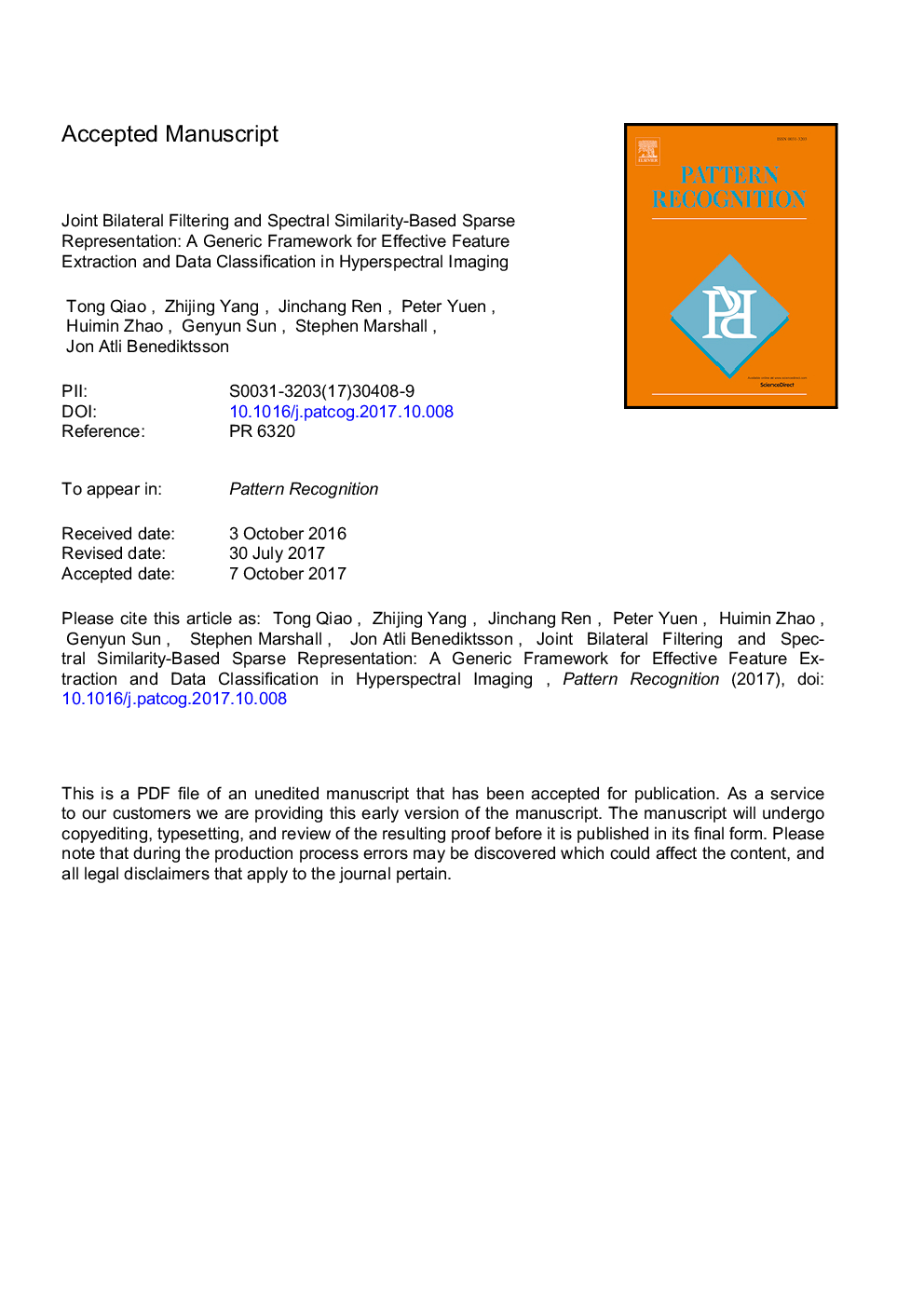| Article ID | Journal | Published Year | Pages | File Type |
|---|---|---|---|---|
| 6939257 | Pattern Recognition | 2018 | 25 Pages |
Abstract
Classification of hyperspectral images (HSI) has been a challenging problem under active investigation for years especially due to the extremely high data dimensionality and limited number of samples available for training. It is found that hyperspectral image classification can be generally improved only if the feature extraction technique and the classifier are both addressed. In this paper, a novel classification framework for hyperspectral images based on the joint bilateral filter and sparse representation classification (SRC) is proposed. By employing the first principal component as the guidance image for the joint bilateral filter, spatial features can be extracted with minimum edge blurring thus improving the quality of the band-to-band images. For this reason, the performance of the joint bilateral filter has shown better than that of the conventional bilateral filter in this work. In addition, the spectral similarity-based joint SRC (SS-JSRC) is proposed to overcome the weakness of the traditional JSRC method. By combining the joint bilateral filtering and SS-JSRC together, the superiority of the proposed classification framework is demonstrated with respect to several state-of-the-art spectral-spatial classification approaches commonly employed in the HSI community, with better classification accuracy and Kappa coefficient achieved.
Related Topics
Physical Sciences and Engineering
Computer Science
Computer Vision and Pattern Recognition
Authors
Qiao Tong, Yang Zhijing, Ren Jinchang, Yuen Peter, Zhao Huimin, Sun Genyun, Stephen Marshall, Jon Atli Benediktsson,
